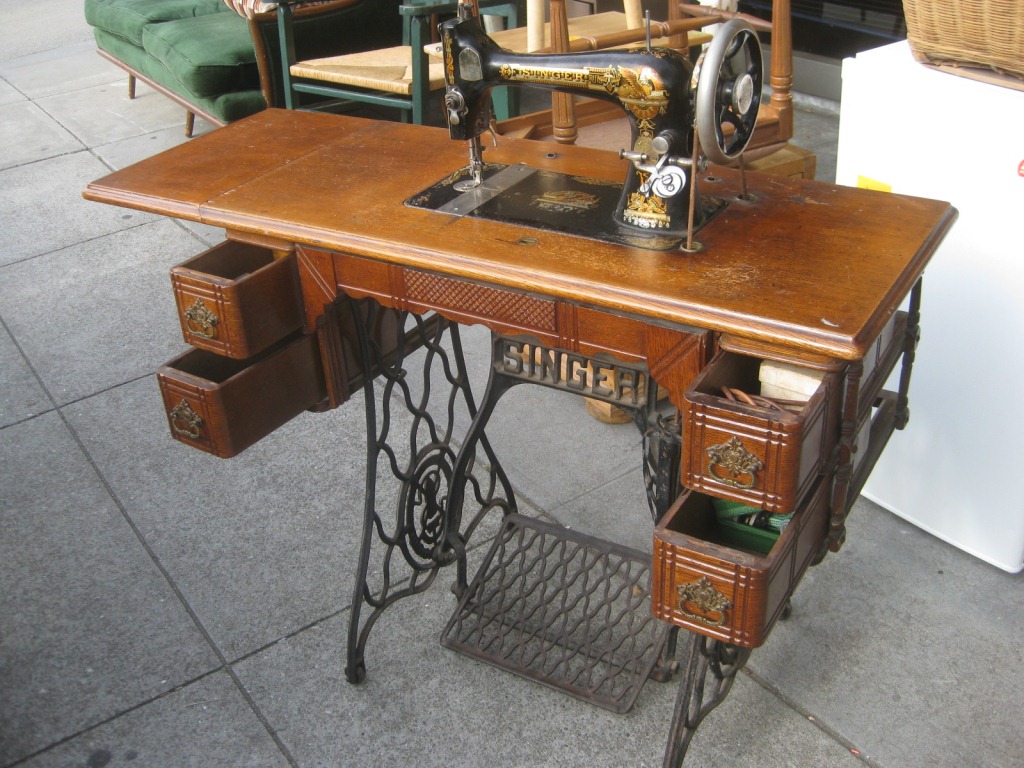 Last week I answered several questions have come up in the past weeks as I've discussed my work on an antique Singer wood sewing machine. So, I thought that while the bleaching process continues on the Singer sewing machine cabinet that I might take the time to address a few more of those questions.
Last week I answered several questions have come up in the past weeks as I've discussed my work on an antique Singer wood sewing machine. So, I thought that while the bleaching process continues on the Singer sewing machine cabinet that I might take the time to address a few more of those questions.
A reader wrote in to ask if I thought that my readers knew the difference between a dust mask and a respirator. Well, the internet being what it is with a vast amount of information available to all, I suspect that not all readers do know that difference.
When using chemicals such as lacquer thinner, acetone, and methanol, it would be a wise idea to wear an appropriate respirator. Those kinds or chemicals are not good for you. Also wear some good chemical resistant gloves that will not let chemicals into your body through the skin of your hands. I found some black neoprene gloves at The Home Depot that I tried out on this project. I am pleased to report that they have not been influenced at all by these chemicals.
 A dust mask is not going to stop the fumes and latex gloves or thin nitrile gloves will fallapart very quickly. You have to invest in 8 mil nitriles and a respirator equipped with the proper organic vapor cartridges. Then too, understand that the activated carbon in those cartridges continue to work once exposed to the environment and that they have a rather short life span. When you are done with your respirator, seal your respirator up in a new, virgin gallon paint can or other air tight container. That will greatly extend their lifespan.
A dust mask is not going to stop the fumes and latex gloves or thin nitrile gloves will fallapart very quickly. You have to invest in 8 mil nitriles and a respirator equipped with the proper organic vapor cartridges. Then too, understand that the activated carbon in those cartridges continue to work once exposed to the environment and that they have a rather short life span. When you are done with your respirator, seal your respirator up in a new, virgin gallon paint can or other air tight container. That will greatly extend their lifespan.
Finally, the question of whether a professional stripping business would use a “dip tank” to strip a project such as this. I am unaware of any such method but I am not experienced in this type of work. However, I do know people who do this on a daily basis and who use a methylene chloride-based stripper in that work. Such products are much more capable on chemically resistant finishes. Still, the messiness of the process remains. Dipping a whole piece of furniture in a tank full of some liquid stripper sounds a bit over the top for a number of reasons. But I am more than willing to learn from any of my readers who can speak with experience on this subject. My acquaintances use a large metal tray or table which contains the mess. It was from seeing those operations that I thought of getting the plastic washing machine tray for my job. It has really kept things under control in the shop as I worked.
Until next time…spray on!






Have something to say? Share your thoughts with us in the comments below.